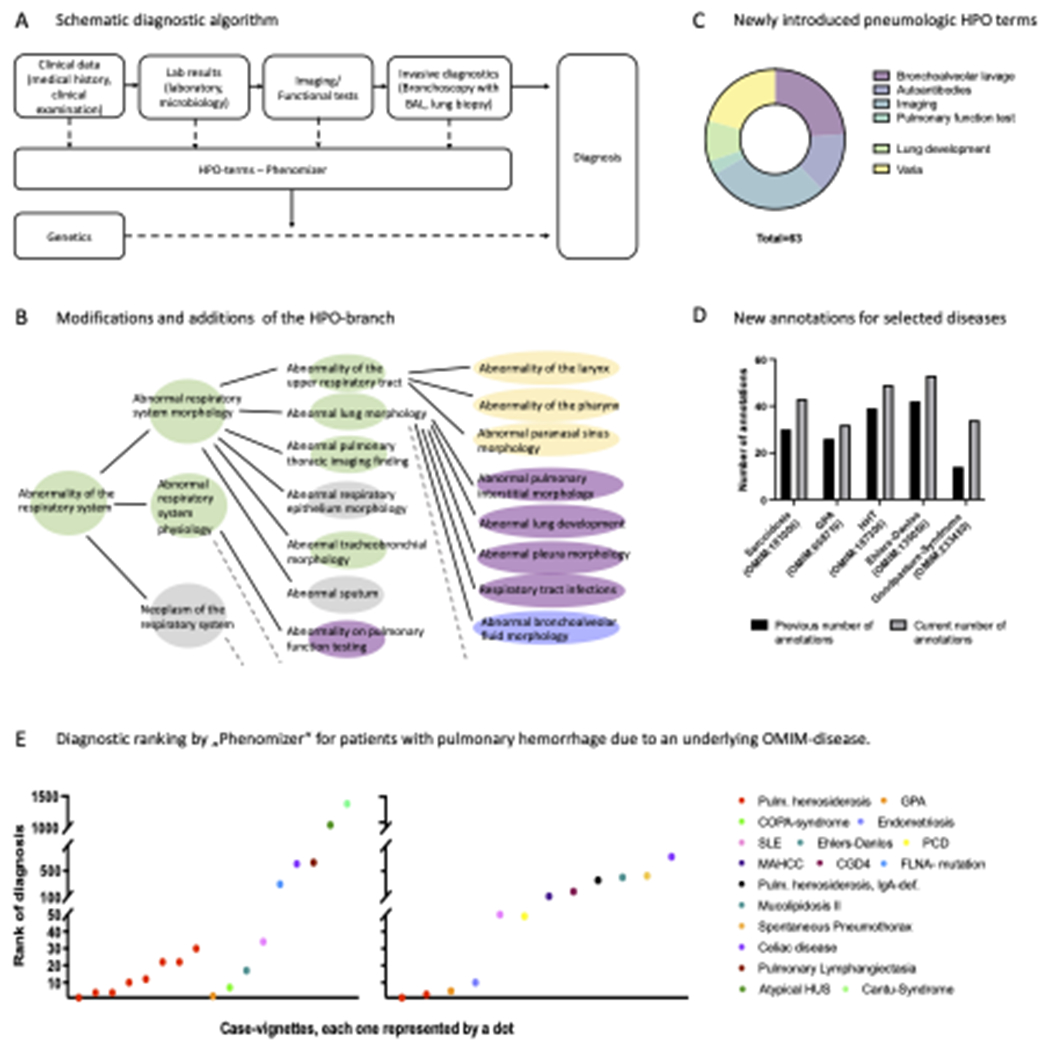Figure 2.

Pulmonary hemorrhage as an example for rare pneumological conditions and Human Phenotype Ontology (HPO). A: Schematic diagnostic algorithm for patients with pulmonary hemorrhage. B: Modifications and additions of the the HPO-branch „Abnormality of the respiratory system“. Green, changes in organisation of HPO-branches. Yellow, introduction of new parent terms. Purple, reassignment and restructuring of terms. Blue, entirely new branch. Broken lines symbolize that the HPO contains additional branches/ terms that are not listed in the figure. Figure 2B is inspired by Haimel et al. (50). C: Creation of new HPO-terms within the field of pneumology. D: Number of annotated terms to selected diseases causing pulmonary hemorrhage before/ after creating new annotation. E: Diagnostic ranking by the „Phenomizer“ for patients with pulmonary hemorrhage due to an underlying OMIM®-disease. Each dot represents a case-vignette with a specific diagnosis. Left graph: cases from our cohort (n = 17). Right graph: case reports from specialized literature (n = 12). Patients with pulmonary hemosiderosis (n=10) are marked in red.
Abbreviations: BAL: bronchoalveolar lavage; CDG4: Chronic granulomatous disease, autosomal recessive, 4; FLNA-mutation: Filamin A-mutation; GPA: Granulomatosis with polyangiitis; HHT: hereditary hemorrhagic teleangiectasia; HPO: Human Phenotype Ontology; HUS: Hemolytic uremic syndrome; MAHCC: methylmalonic aciduria and homocystinuria type cblC; PCD: Primary ciliary dyskinesia; SLE: Systemic lupus erythematosus; Pulm. hemosiderosis, IgA-def.: Pulmonary hemosiderosis with IgA-deficiency.
